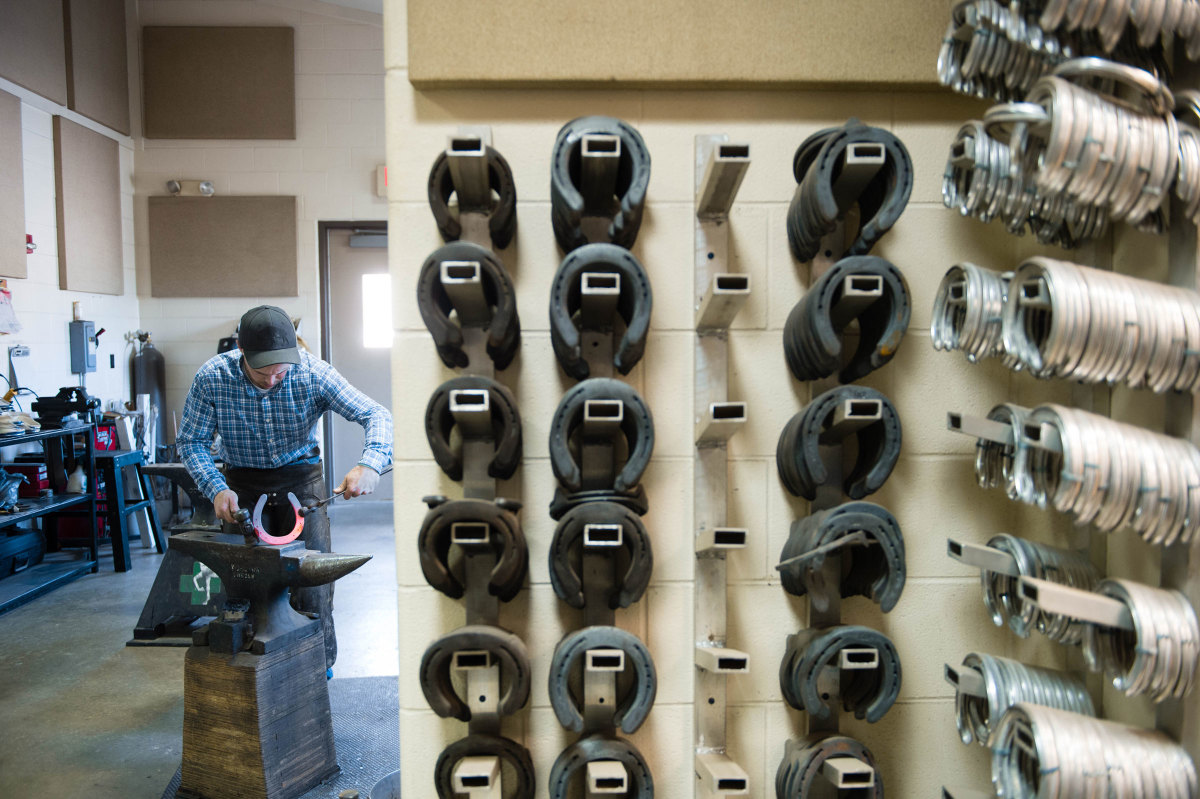
According to the AAEP owner survey, the top three things that horse owners want from vets are 24/7 coverage, a vet who values them and their horse and communicates well, and a practitioner who keeps up with medical advances. With that in mind, regular installments of Keeping Up will headline some recent information to keep you abreast of research, advances and continuing education in the equine medical community.
At the North American Veterinary Conference (January 2016), Vernon C. Dryden, DVM, CJF, APF, of Rood and Riddle Equine Hospital in Lexington, Kentucky, discussed equine laminitis and the distal limb.
Besides laminitis, the equine distal limb can experience any number of pathological conditions. MRI imaging is capable of accurately diagnosing the specific area(s) of injury within the hoof so lesions can be addressed exactly. Dryden discussed the use of MRI to assist in therapeutic farrier techniques based on an accurate diagnosis of the lesions involved in a horse’s lameness.
Not only is a balanced trim important, but also the type of horseshoe used and its placement provide critical mechanical advantages or disadvantages. Dryden noted, “The goals of developing a shoeing protocol are to 1) to reduce biomechanical forces on the primarily injured structure; 2) to restore foot balance; 3) to improve on existing hoof morphology problems; and 4) to provide protection to injured areas of the foot.”
He suggested different approaches for various foot ailments.
Navicular Disease
- The use of an egg-bar shoe helps to decrease digital flexor tendon stress on hooves with long toes.
- A soft composite pad dampens concussion.
- Rolled or rocker-toed shoes lessen the duration of breakover, thereby minimizing stress within hoof structures.
- While wedging might decrease tension on the deep digital flexor tendon, wedges can increase loading forces on the heels, which is particularly counterproductive in horses with collapsed heels.
Coffin Joint Osteoarthritis
- It is counterproductive to increase hoof angle as this increases pressure with the DIP joint.
- Rocker or rolled toe shoes from quarter to quarter are helpful.
- Unload the frog via leather pads with V-shaped cutouts or via a urethane pour-in pad.
DIP Collateral Ligament Injury
- Add more support to the injured side via a wider branch.
- Rolling of the shoe on the opposite side of the injury improves support to the injured side.
Suspensory Ligament Injury
- It is counterproductive to elevate the heels.
- Shorten the toe to improve breakover and minimize stress on the suspensory ligaments.
- Shoe wider at the toe than at the heels to decrease the wedging effect that occurs from ground reaction forces in soft footing.
- Don’t use egg-bar shoes as they increase stress on suspensory ligaments.
The Bottom Line
Laminitis and other problems in the distal equine limb continue to be frustrating. No two laminitis cases are ever the same. Many treatments are expounded for managing laminitic horses, with some treatments consistently helpful, others only occasionally useful, and some treatments not useful at all.
Now, with the use of stem cell therapy and the revitalization of an older method, such as hoof casts, you can offer your clients more options to improve quality of life for their beloved horses.
The use of MRI to aid in accurate diagnosis of various foot problems provides you with the opportunity to address specific injuries and improve outcomes.
Keeping up with medical options can be refreshing and stimulating to both younger and older practitioners. Achieving success in treating such a difficult syndrome as laminitis is gratifying on many levels—you might save the life of a treasured companion while also becoming a hero in the eyes of your client. Not only do such successes meet your objective for pursuing veterinary medicine in the first place, this successful outcome does wonders for your clinic’s reputation and in building client loyalty.









